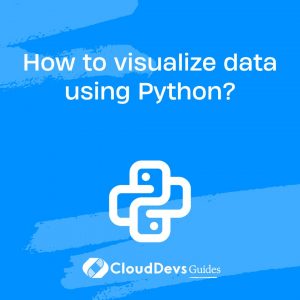Python Q & A
How to visualize data using Python?
Visualizing data is crucial in many aspects of data analysis, as it can provide immediate insights and help in communicating results. Python offers a diverse set of libraries tailored for different visualization needs. Here’s a brief overview:
- Matplotlib: This is one of the most widely used plotting libraries in Python. It provides a versatile platform to create a wide array of static, animated, and interactive visualizations. Its object-oriented API gives granular control over the properties of every plot element, making it suitable for custom visualizations.
- Seaborn: Built on top of Matplotlib, Seaborn offers a higher-level interface optimized for statistical data visualization. It comes with several built-in themes and color palettes to produce beautiful charts with less code. Seaborn can automatically derive relationships from datasets, easing tasks like correlation heatmaps or pair plots.
- Pandas Visualization: Pandas, the popular data manipulation library, has built-in visualization capabilities derived from Matplotlib. This means you can directly plot data from dataframes without much hassle, which is especially useful for quick exploratory analysis.
- Plotly: For interactive visualizations, Plotly is a go-to choice. It allows for the creation of web-based visuals that can be embedded into applications or dashboards. Its interactivity is beneficial for detailed examination of complex datasets.
- Bokeh: Similar to Plotly, Bokeh specializes in creating interactive plots for web applications. It offers a concise syntax and the ability to link plots, enabling sophisticated dashboard-like interfaces.
- Altair: A declarative statistical visualization library, Altair allows you to build plots by linking dataset columns to visual properties. It’s based on the Vega and Vega-Lite visualization grammars, making it unique in its approach.
- Geographical Data: For visualizing geospatial data, libraries like `Geopandas`, `Folium`, and `Basemap` come into play. These allow rendering of maps and overlaying data points, shapes, or routes.
Python provides a rich landscape of data visualization tools, each with its strengths. The choice of library often depends on the nature of the data and the specific requirements of the task at hand. With Python, you’re well-equipped to transform your data into meaningful and impactful visuals.

Previously at


Brazil

GMT-3
Senior Software Engineer with 7+ yrs Python experience. Improved Kafka-S3 ingestion, GCP Pub/Sub metrics. Proficient in Flask, FastAPI, AWS, GCP, Kafka, Git



